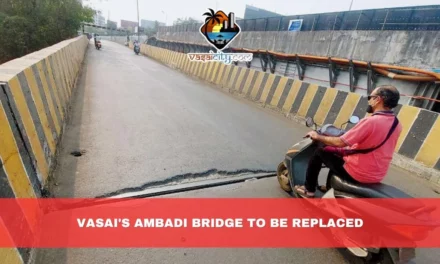In a groundbreaking move, the Maharashtra State Road Development Corporation (MSRDC) has initiated the feasibility study for what is set to become the Mumbai Metropolitan Region’s (MMR) longest metro rail line, spanning a whopping 136 kilometers from Virar to Alibaug. This marks a significant departure for MSRDC, traditionally involved in the construction of roads, bridges, and flyovers, as it ventures into the realm of metro rail projects for the first time.
The extensive metro rail initiative is a crucial component of the ₹55,000 crore Virar-Alibaug Multimodal Corridor, a massive 14-lane expressway designed for a maximum speed of 120 kmph. Anticipated to be completed by the year 2030, the project is set to unfold in two distinct phases. Phase 1 involves a 98.5-kilometer highway stretching from Navghar to Balavali, followed by Phase 2, covering a 129.9-kilometer highway from Balavali to Alibaug. The nomenclature ‘multimodal corridor’ aptly reflects its design to integrate various modes of transportation, including roads, rail, and metro, to create an efficient and comprehensive transport network.
The metro rail, envisioned to have a minimum of 40 stations connecting two crucial suburbs within the MMR – Navghar near Virar to Alibaug – will run parallel to the multimodal corridor. An official from MSRDC revealed that once the initial feasibility study concludes in the next 6-8 months, a detailed project report will be prepared. The metro line is anticipated to link the proposed Navi Mumbai airport and JNPA (Jawaharlal Nehru Port Area).
To ensure the project’s success, MSRDC is in the process of appointing a consultant. Despite being a part of the multimodal corridor, authorities will meticulously assess whether any adjustments in cost, route, or other details need to be integrated into the study. Initially intended to commence from Kharbao in Bhiwandi to Alibag, the project’s feasibility is at the forefront of decision-making.
Transport experts and members of the Mumbai Mobility Forum, such as AV Shenoy, advocate for suburban rail lines on long-distance routes. Shenoy highlights the cost-effectiveness of suburban lines, emphasizing their ability to connect seamlessly with existing rail systems at Virar and Pen, and their potential to cater to freight trains. He argues against the elevated metro line, which he believes would be three times more expensive, constituting an inefficient use of public funds.
One critical aspect yet to be decided is the location of the car depot for the metro line, intended to bolster connectivity in Vasai-Virar, Bhiwandi, Kalyan, Uran, Pen, and Alibag. The feasibility study by MSRDC comes at a time when the state government is contemplating transferring the Virar-Alibaug Multimodal Corridor project and metro line construction responsibilities to the Mumbai Metropolitan Region Development Authority (MMRDA). MMRDA, known for its expertise in implementing metro rail lines, is already planning an extensive web of 337 kilometers of metro rail lines across MMR, excluding the proposed Virar-Alibaug route.
As Maharashtra takes the first steps towards the ambitious Virar-Alibaug Metro Rail project, the integration of various modes of transportation promises a transformative impact on the region’s infrastructure and connectivity. With careful consideration of feasibility and expert insights, the state aims to navigate the challenges ahead and deliver a robust, cost-effective, and efficient transport solution for the bustling Mumbai Metropolitan Region.














